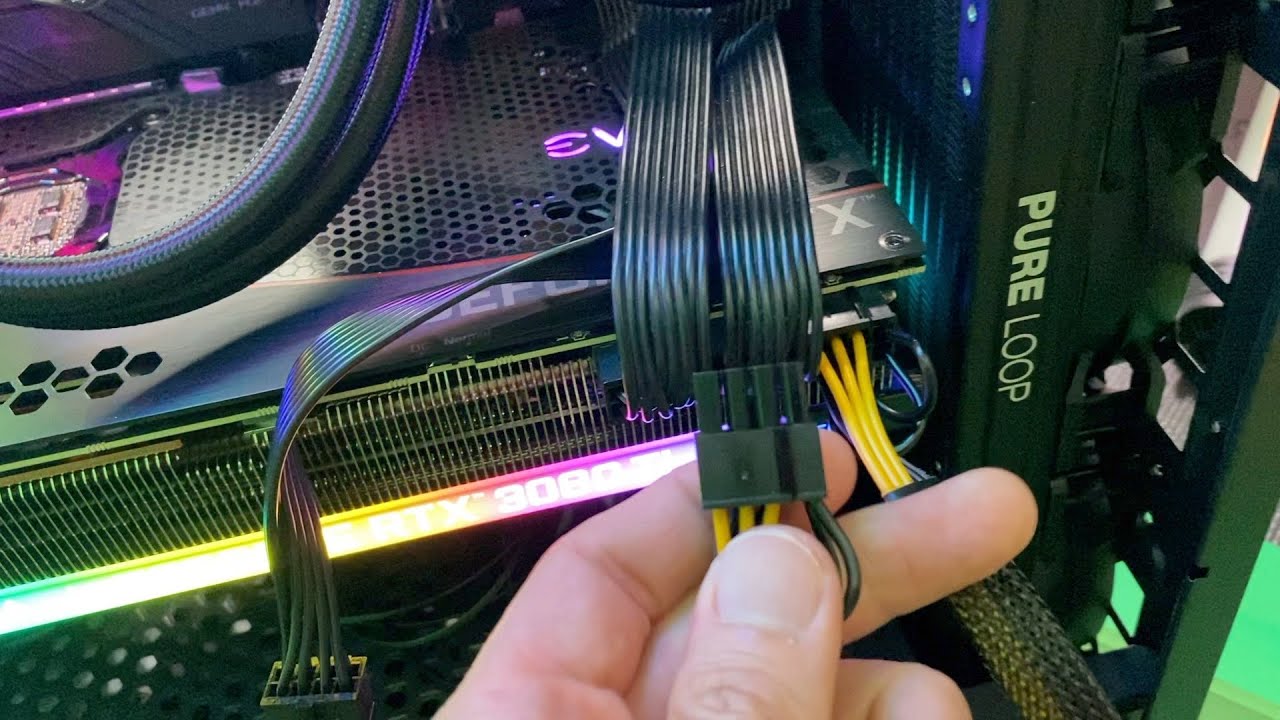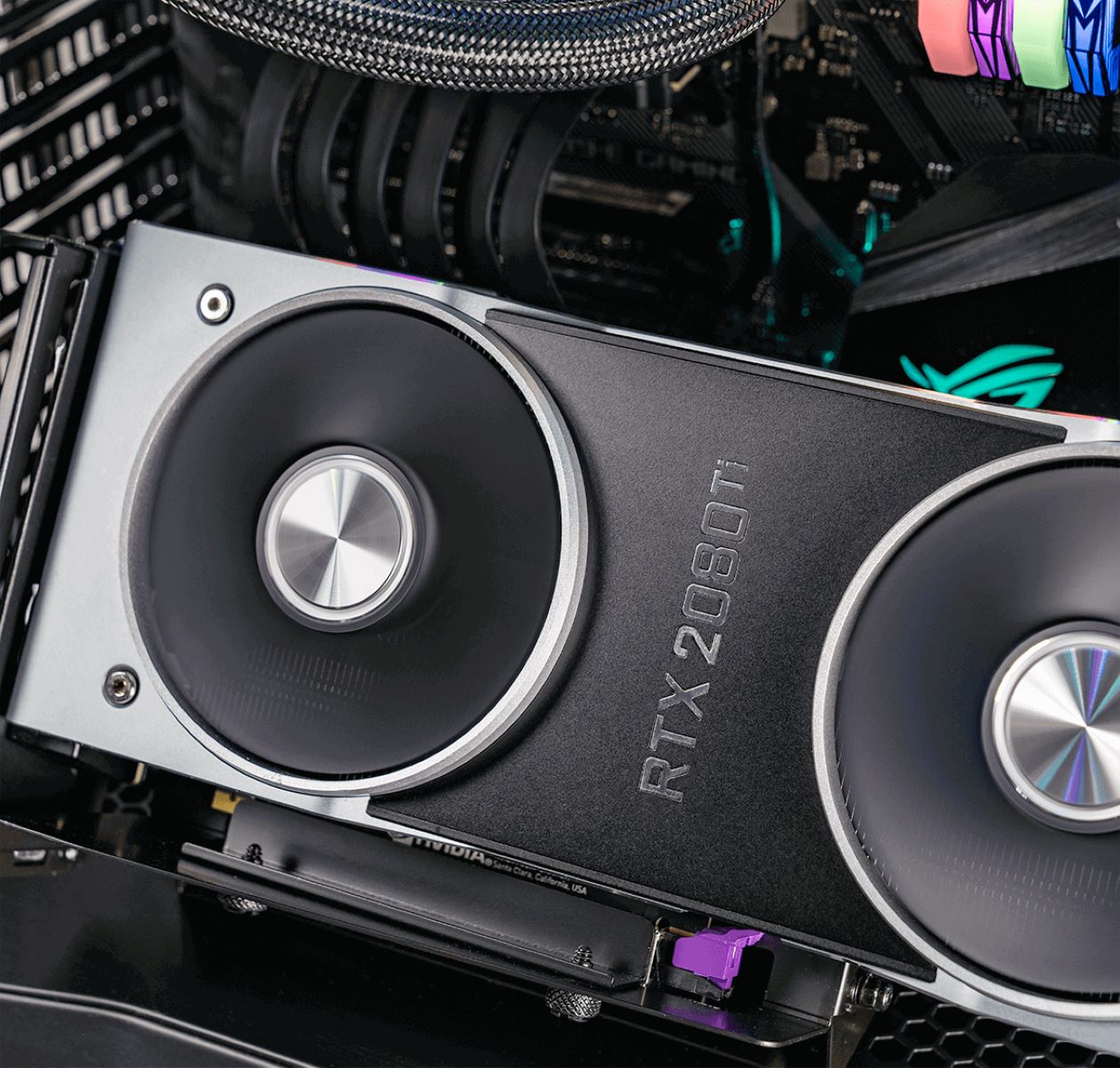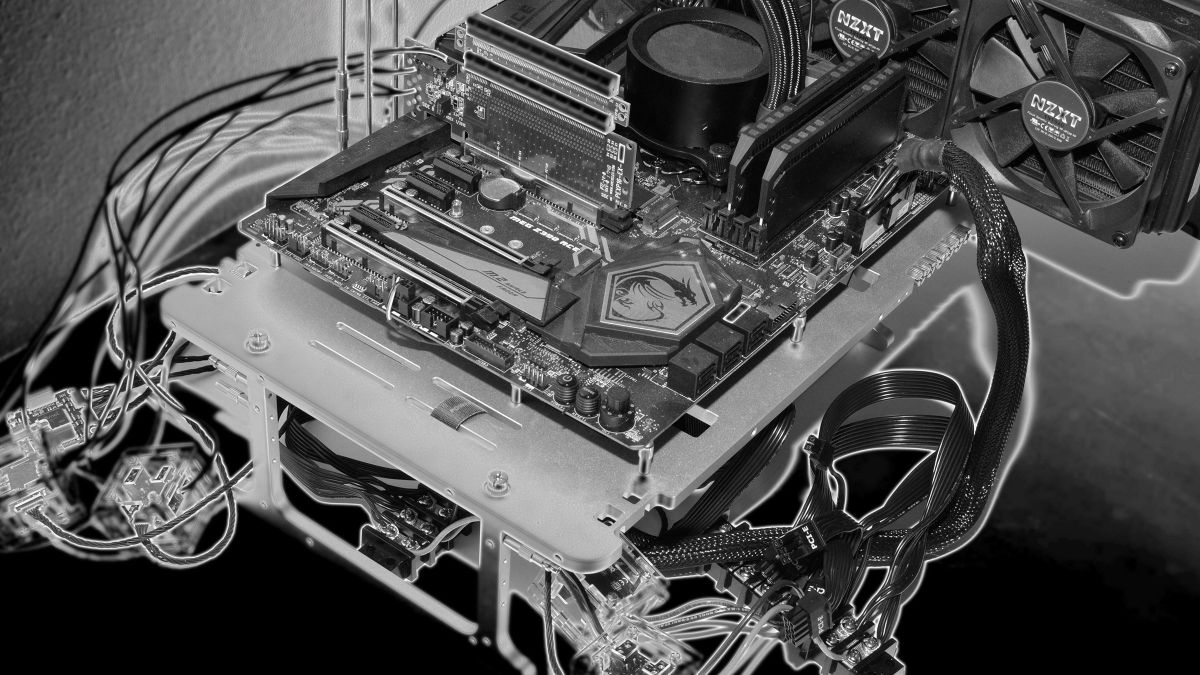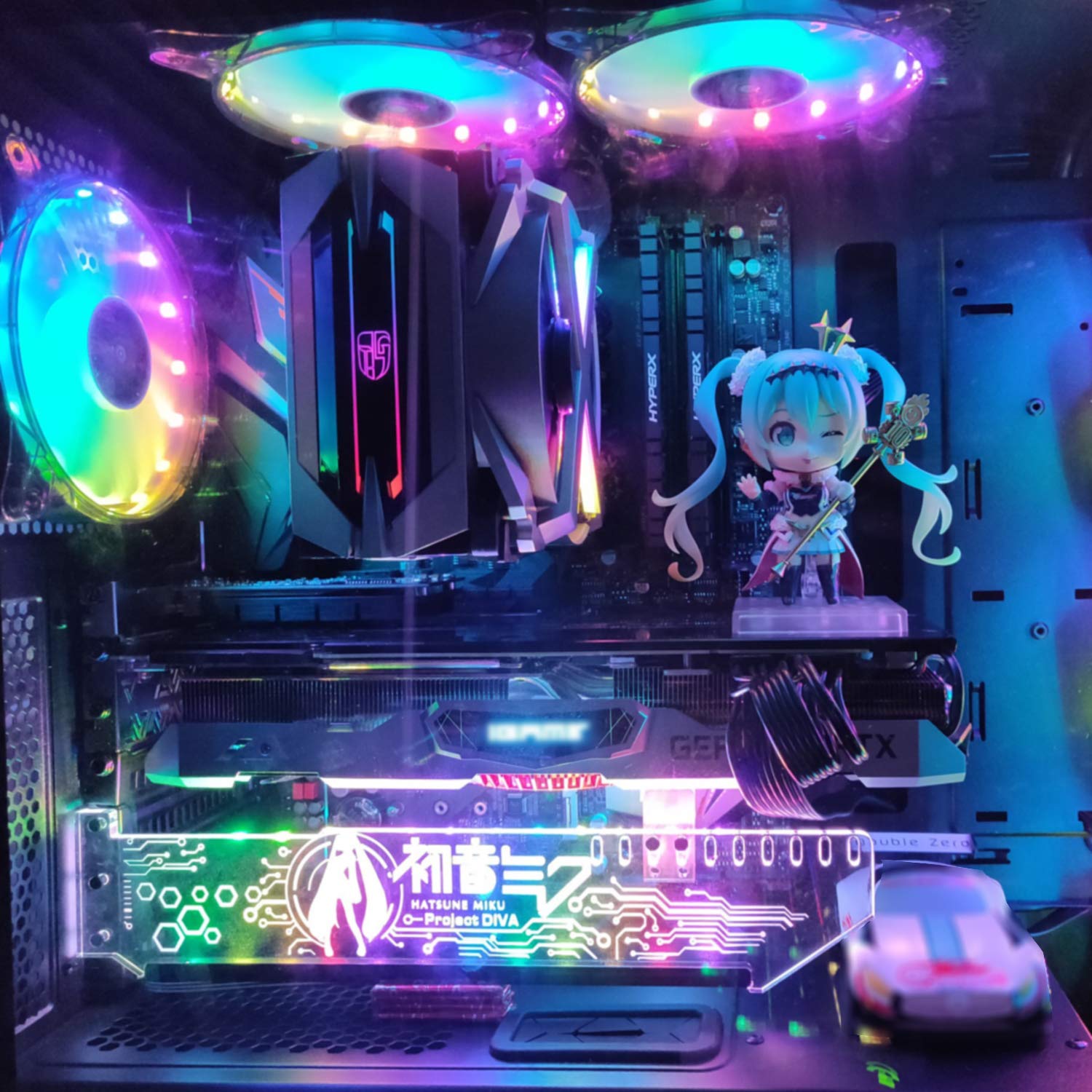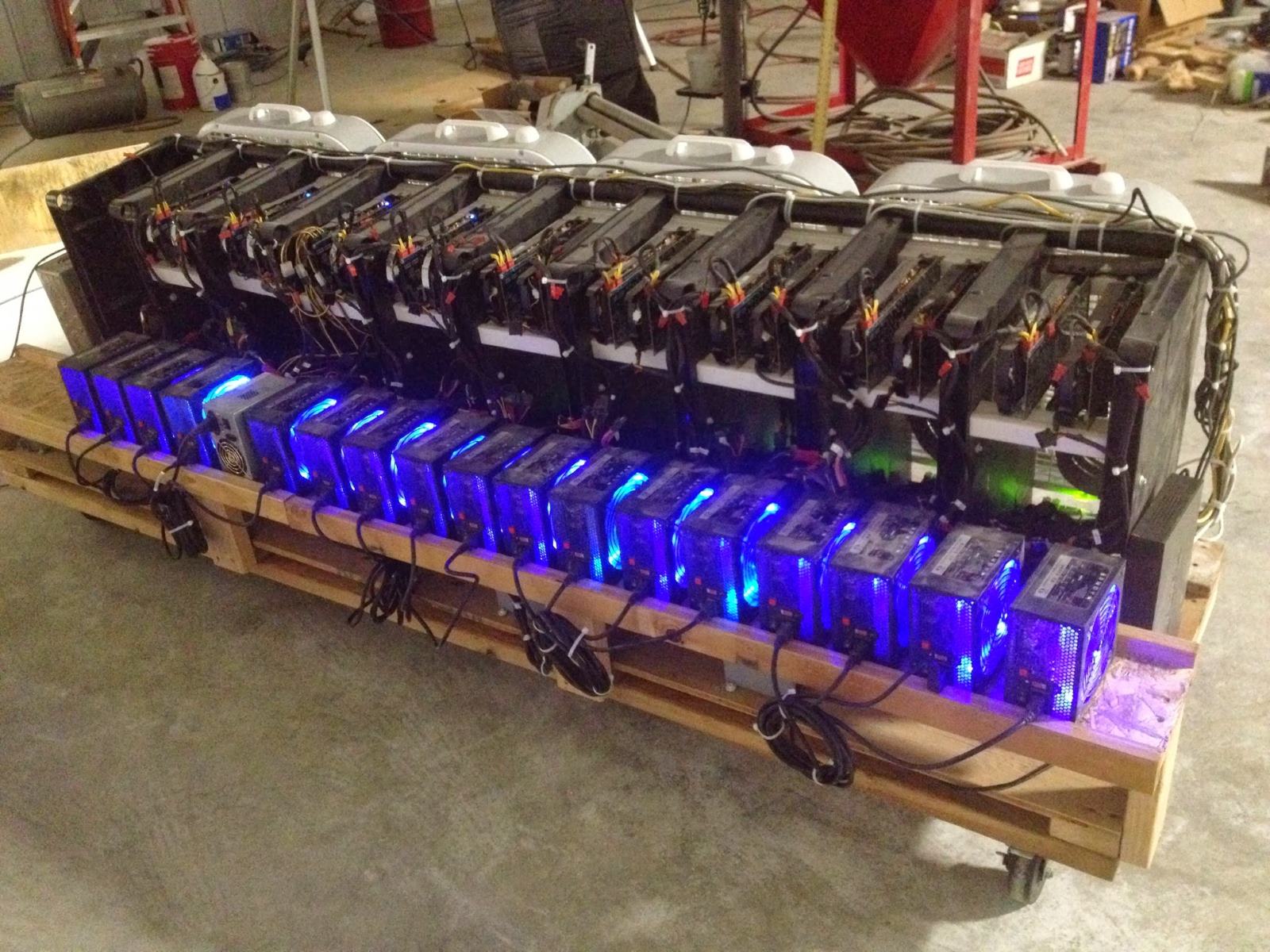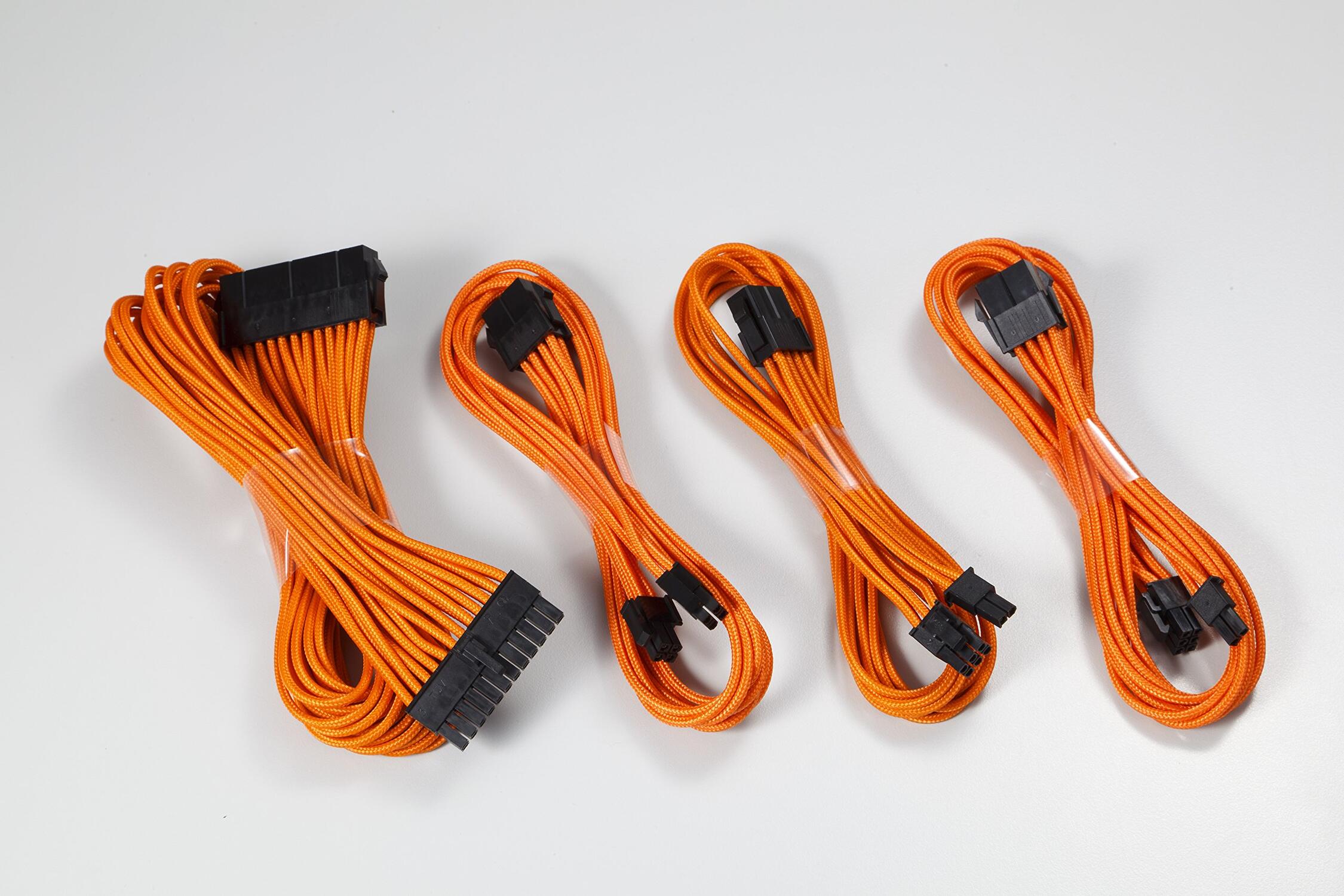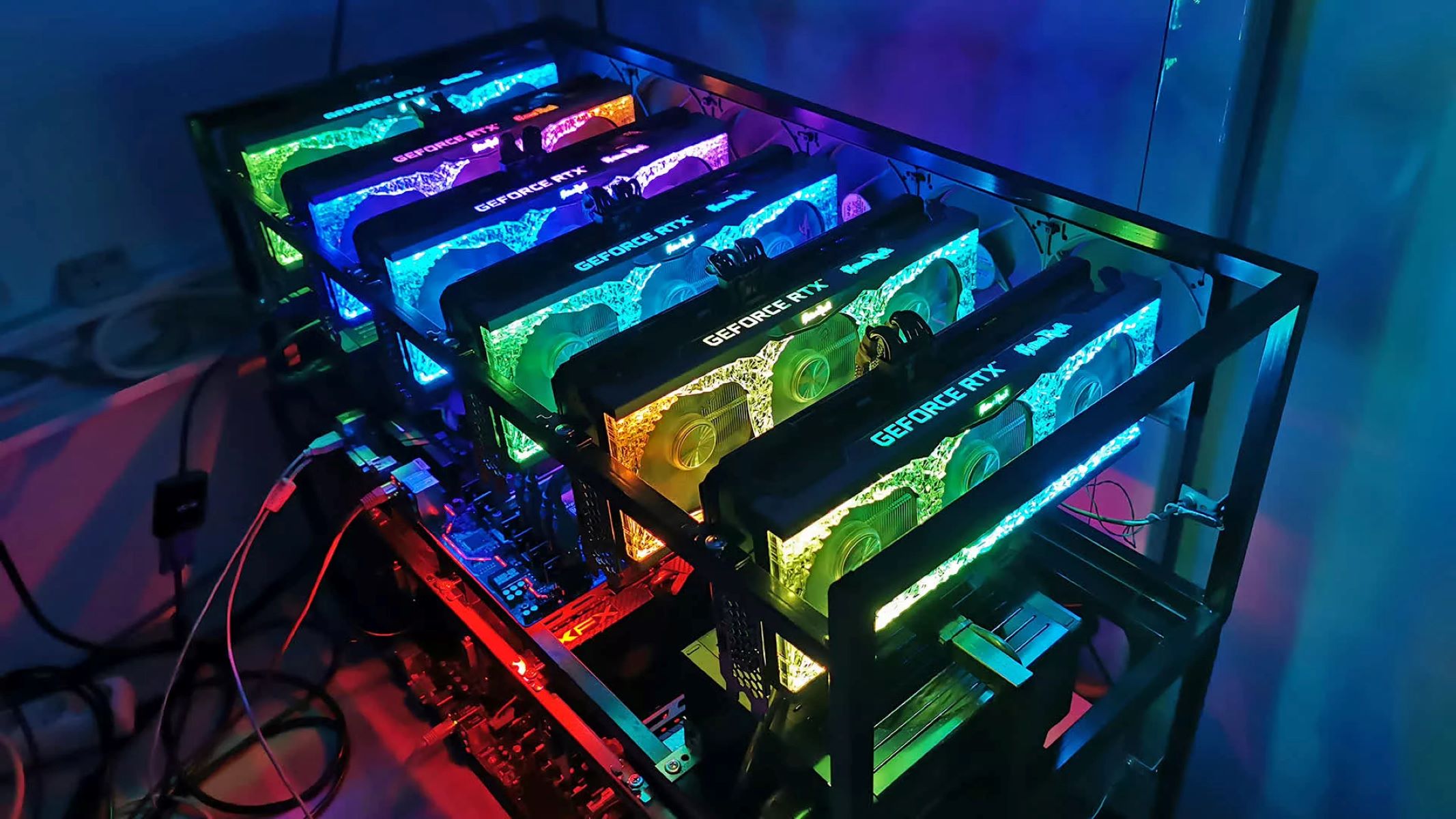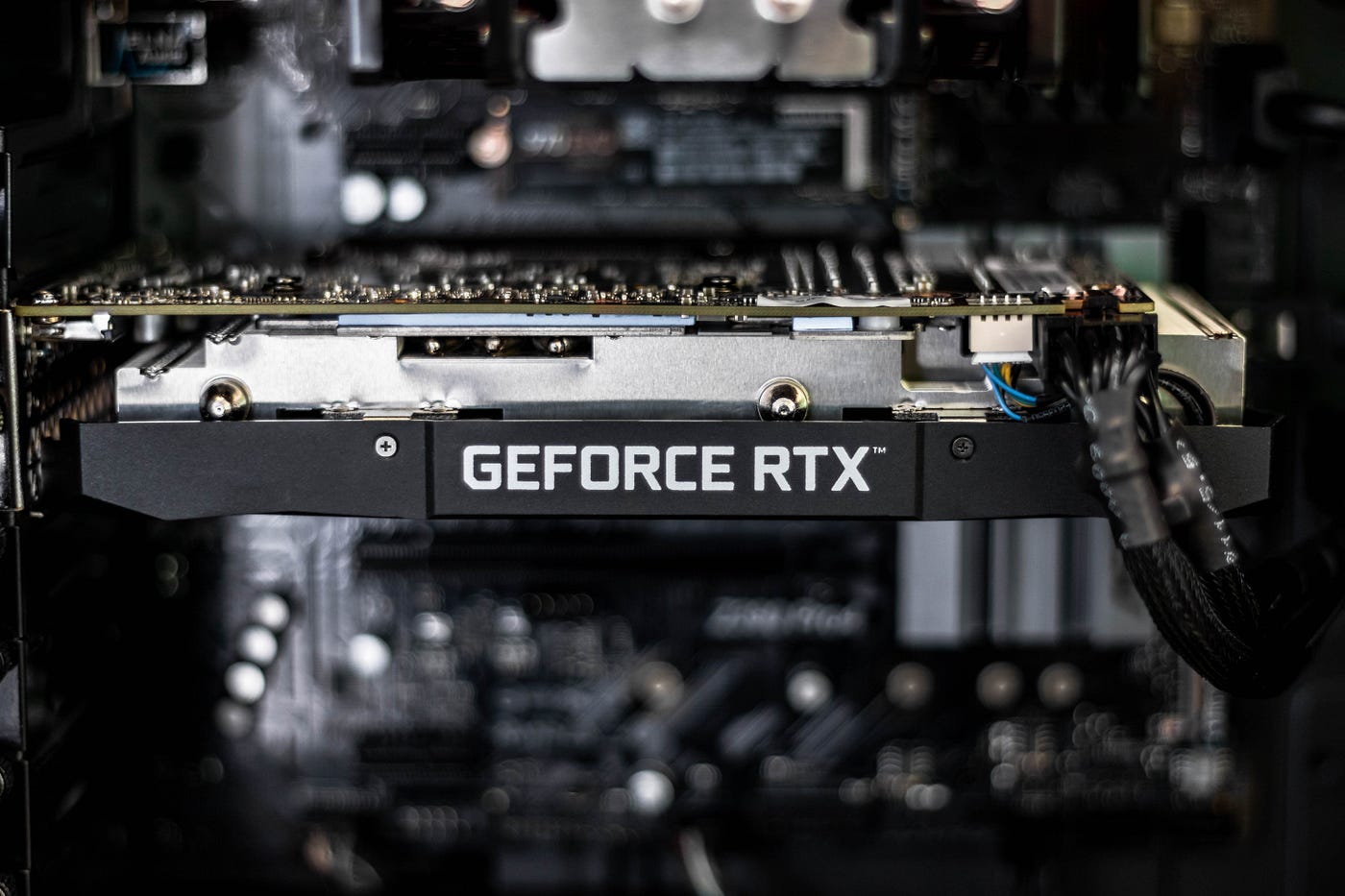Introduction
When it comes to building or upgrading a gaming rig, one of the most vital components to consider is the graphics processing unit (GPU). The GPU is responsible for rendering all the stunning visuals and delivering a smooth gaming experience. However, to power the GPU and ensure it operates at its full potential, it requires a dedicated power source in the form of a power cable.
A GPU power cable is specifically designed to supply the necessary electrical power to the graphics card, allowing it to perform at its optimal level. While it may seem like a simple accessory, choosing the right power cable for your GPU is crucial to avoid compatibility issues, unstable performance, and even potential damage to your hardware.
In this article, we will explore the different types of power cables available for GPUs and how to determine the appropriate one for your graphics card’s power requirements. By understanding the significance of selecting the correct power cable, you can ensure a reliable and efficient power supply to your GPU, resulting in a seamless gaming experience.
What is a GPU Power Cable?
A GPU power cable, also known as a graphics card power cable or PCIe power cable, is a specialized cable that is used to connect a graphics card to the power supply unit (PSU) of a computer. It provides the necessary electrical power to the GPU, allowing it to function properly and deliver the required performance.
Modern GPUs consume a significant amount of power, especially high-end gaming graphics cards. The power requirements can range from 75 watts for entry-level GPUs to over 300 watts for top-of-the-line models. The power cable facilitates the transfer of the required electrical power from the PSU to the GPU.
Typically, a GPU power cable is equipped with specific connectors at both ends. One end of the cable is connected to the PCIe slot on the graphics card, while the other end is plugged into the appropriate power supply connector on the PSU. The most common types of power connectors used in GPU power cables are the 6-pin, 8-pin, and 6+2-pin connectors.
It’s important to note that not all graphics cards require an external power supply. Some low-power GPUs draw their power solely from the PCIe slot on the motherboard. However, high-performance gaming graphics cards, especially those with multiple GPUs or overclocking capabilities, require additional power from the PSU via a dedicated power cable.
The GPU power cable not only provides the necessary power, but it also ensures a stable and reliable power supply to the graphics card. This is crucial for preventing power fluctuations or insufficient power delivery, which could result in system crashes, freezing, or even permanent damage to the GPU.
Why do you need a specific power cable for your GPU?
Choosing a specific power cable for your GPU is essential for several reasons. Let’s explore why:
1. Power Requirements: Graphics cards have varying power requirements depending on their model, specifications, and intended use. The power cable ensures that the GPU receives the necessary electrical power to function optimally and avoid any issues caused by insufficient power supply.
2. Compatibility: Different GPUs have different power connector configurations. Using the wrong power cable can result in incompatible connections, preventing the graphics card from receiving any power at all. A specific power cable ensures a proper fit and connection between the PSU and the GPU.
3. Stability and Performance: A dedicated power cable ensures a stable power supply to the graphics card, minimizing power fluctuations or inconsistencies. This stability is crucial for reliable performance, especially during intense gaming sessions or demanding tasks that put the GPU under heavy load.
4. Overclocking Potential: Overclocking a GPU involves pushing it beyond its default clock speed to achieve higher performance. This process requires additional power to be supplied to the graphics card. A specific power cable designed for overclocking can handle the increased power demands, providing a stable environment for pushing the GPU to its limits.
5. Safety: Using an incorrect power cable can result in overheating, short circuits, or even damage to the GPU and other components. Specific power cables are designed to meet safety standards and ensure proper power delivery, reducing the risk of accidents or hardware failures.
6. Future Upgrades: If you plan to upgrade your graphics card in the future, having a specific power cable allows for seamless transitions. You won’t have to worry about compatibility issues or purchasing a new power cable every time you upgrade your GPU.
In summary, a specific power cable for your GPU is crucial for ensuring compatibility, stability, performance, safety, and future upgradeability. It is an investment that will optimize your gaming experience and protect your valuable hardware from potential damage.
Determining the Power Requirements of Your GPU
Before selecting the appropriate power cable for your GPU, it is imperative to determine the power requirements of your graphics card. This information will help you choose a power cable that can supply the necessary electrical power for your GPU to perform optimally.
1. Manufacturer Specifications: The first and most reliable source of information regarding power requirements is the manufacturer’s specifications for your GPU. This can typically be found on the manufacturer’s website or in the product documentation. Look for the recommended PSU wattage and the specific power connector requirements.
2. Power Connectors: Take note of the power connectors required by your graphics card. These are often mentioned in the manufacturer’s specifications. Common power connector types include 6-pin, 8-pin, and 6+2-pin connectors. The number and type of connectors required will determine the power cable compatibility.
3. TDP (Thermal Design Power): The TDP of a GPU refers to the maximum amount of power it can dissipate under normal operation. Although the TDP is not an exact representation of power consumption, it can give you a rough idea of the power requirements. Higher TDP values often indicate a need for a more powerful power cable.
4. Power Supply Unit (PSU) Capacity: Check the wattage rating of your PSU to ensure it can provide enough power for your graphics card. It is recommended to have a PSU with a wattage capacity that exceeds the power requirements of your GPU. This allows for stable power delivery and accommodates any future upgrades or additional power needs.
5. Online Power Calculators: If you’re unsure or want a more accurate estimation of your GPU’s power requirements, online power calculators can help. These tools take into account various factors such as CPU, GPU, memory, and additional components to provide a more precise power consumption estimate.
By considering the manufacturer’s specifications, power connectors, TDP, PSU capacity, and using online power calculators, you can determine the power requirements of your GPU. Armed with this information, you can confidently select the appropriate power cable that matches the power needs of your graphics card.
GPU Power Cable Types
When it comes to GPU power cables, there are several types available to accommodate various power requirements and connector configurations. Let’s explore the most common GPU power cable types:
1. 6-Pin Power Cable: The 6-pin power cable, also known as the PEG (PCI Express Graphics) or PCIe 6-pin connector, consists of six pins arranged in three rows. It can supply up to 75 watts of power to the graphics card. This type of power cable is commonly found on entry-level and mid-range graphics cards.
2. 8-Pin Power Cable: The 8-pin power cable, also known as the PCIe 8-pin connector, has eight pins arranged in two rows. It can provide up to 150 watts of power to the GPU. The 8-pin power cable is commonly used for high-performance graphics cards that require more power.
3. 6+2-Pin Power Cable: The 6+2-pin power cable, also known as the PCIe 6+2-pin connector or the PEG 8-pin connector, combines the features of the 6-pin and 8-pin cables. It consists of a 6-pin connector with an additional 2-pin connector attached, allowing it to be used as either a 6-pin or 8-pin power cable. This versatility makes it compatible with a wide range of graphics cards.
It’s important to note that some power supplies come with power cables that have modular designs, allowing you to customize the cable configuration to match your GPU’s power requirements. These modular cables often provide a combination of 6-pin, 8-pin, and 6+2-pin connectors, ensuring compatibility with various graphics cards.
Furthermore, it’s crucial to use power cables that are specifically designed for GPUs. Avoid using adapters or repurposing cables meant for other devices, as they may not provide the necessary power or have the correct pin configuration for your graphics card. Using proper GPU power cables ensures a reliable power connection and prevents compatibility issues or potential damage to your hardware.
When selecting a power cable, check the specifications of your GPU and compare them to the available power cable options. Choose the power cable that matches your graphics card’s power requirements to ensure proper power delivery and optimal performance.
6-pin Power Cable
The 6-pin power cable, also known as the PCIe 6-pin connector or PEG 6-pin connector, is a commonly used power cable for graphics cards. It consists of six pins arranged in three rows, providing a power supply capacity of up to 75 watts.
The 6-pin power cable is typically used for entry-level and mid-range graphics cards that have lower power requirements. It connects the graphics card to the power supply unit (PSU) of the computer, ensuring that the GPU receives the necessary electrical power to operate optimally.
When connecting a 6-pin power cable, align the pins with the corresponding slots on both the graphics card and the PSU. The connector is designed to fit in only one orientation, so be sure to insert it correctly to avoid any potential damage.
It’s essential to note that some higher-end graphics cards may require additional power beyond what a single 6-pin power cable can provide. In such cases, you may need to use multiple 6-pin power cables or consider upgrading to a graphics card that utilizes an 8-pin power connector.
When selecting a 6-pin power cable, ensure it meets the appropriate safety standards. Avoid using adapters or repurposing cables meant for other devices, as they may not deliver the necessary power or have the correct pin configuration for your GPU. Using the correct power cable ensures a reliable and safe power supply to your graphics card.
Additionally, when upgrading or building a gaming rig, it’s important to check the power supply unit’s capacity to ensure it can handle the power requirements of your graphics card and other components. A PSU with a higher wattage capacity allows for future upgrades and provides a stable power supply to your GPU.
In summary, the 6-pin power cable is a common power cable used for graphics cards with lower power requirements. It provides a reliable power supply to the GPU, ensuring optimal performance during gaming or graphics-intensive tasks. When using a 6-pin power cable or any power cable for your GPU, always follow the manufacturer’s guidelines and consult the PSU specifications to ensure compatibility and safety.
8-pin Power Cable
The 8-pin power cable, also known as the PCIe 8-pin connector, is a commonly used power cable for graphics cards that require higher power delivery. It consists of eight pins arranged in two rows and can provide a power supply capacity of up to 150 watts.
The 8-pin power cable is typically used for high-performance graphics cards that demand more power to operate optimally. It connects the graphics card to the power supply unit (PSU) of the computer, ensuring a stable and reliable power supply for the GPU’s efficient functioning.
When connecting an 8-pin power cable, align the pins with the corresponding slots on both the graphics card and the PSU. The connector is designed to fit in only one orientation, so be sure to insert it correctly to avoid any potential damage.
It’s important to note that some graphics cards may require multiple 8-pin power cables, especially in cases where there are dual GPUs or overclocking capabilities. Consult the manufacturer’s specifications for your graphics card to determine the specific power requirements and the number of 8-pin power cables needed.
When selecting an 8-pin power cable, ensure that it meets the appropriate safety standards and is of high quality. Using adapters or repurposing cables meant for other devices is not recommended, as they may not deliver the necessary power or have the correct pin configuration for your graphics card.
Furthermore, it’s essential to consider the power supply unit’s capacity when using an 8-pin power cable. Make sure your PSU has an adequate wattage rating to handle the power requirements of your graphics card and other system components. This ensures a stable power supply, reduces the risk of power-related issues, and allows for potential future upgrades.
In summary, the 8-pin power cable is a widely used power cable for high-performance graphics cards that require more power. It provides a reliable and efficient power supply to the GPU, enabling optimal performance during demanding gaming or graphics-intensive tasks. When using an 8-pin power cable or any power cable for your GPU, always follow the manufacturer’s guidelines and consult the PSU specifications to ensure compatibility and safety.
6+2-pin Power Cable
The 6+2-pin power cable, also known as the PCIe 6+2-pin connector or PEG 8-pin connector, is a versatile power cable used for connecting high-performance graphics cards to the power supply unit (PSU) of a computer. It combines the features of both the 6-pin and 8-pin power cables, providing flexibility in power delivery.
The 6+2-pin power cable has a 6-pin connector with an additional 2-pin connector attached. This configuration allows it to be used as either a 6-pin or 8-pin power cable, depending on the requirements of the graphics card. The 6-pin connector portion can supply up to 75 watts, while the 2-pin connector adds an extra 25 watts, providing a maximum power capacity of 150 watts.
Using a 6+2-pin power cable offers compatibility with a wide range of graphics cards, as it can adapt to their specific power connector requirements. Whether your graphics card requires a 6-pin or 8-pin connector, the 6+2-pin power cable can provide the appropriate power supply.
When connecting a 6+2-pin power cable, align the pins with the corresponding slots on both the graphics card and the PSU. The connector is designed to fit in only one orientation, ensuring a secure and reliable connection.
It’s important to note that some high-end graphics cards may require multiple 6+2-pin power cables, especially for models with dual GPUs or when overclocking capabilities are desired. Check the manufacturer’s specifications of your graphics card to determine the specific power requirements and the number of 6+2-pin power cables needed.
When selecting a 6+2-pin power cable, ensure that it meets the appropriate safety standards and is of high quality. Avoid using adapters or repurposing cables meant for other devices, as they may not deliver the necessary power or have the correct pin configuration for your graphics card.
Additionally, consider the wattage capacity of your PSU when using a 6+2-pin power cable. Make sure the PSU can handle the power requirements of your graphics card and other system components. Having a PSU with higher wattage allows for stable power delivery, future upgrades, and optimal performance.
In summary, the 6+2-pin power cable is a versatile option for connecting high-performance graphics cards to the PSU. Its flexibility in power delivery makes it compatible with various graphics card models that require 6-pin or 8-pin power connectors. When using a 6+2-pin power cable, always refer to the manufacturer’s guidelines and consult the PSU specifications for compatibility and safety.
Choosing the Right Power Cable for Your GPU
Choosing the right power cable for your GPU is crucial to ensure optimal performance, compatibility, and safety. Here are some factors to consider when selecting a power cable:
1. Power Requirements: Determine the power requirements of your graphics card by referring to the manufacturer’s specifications. This includes the recommended PSU wattage and the specific power connector requirements (6-pin, 8-pin, or 6+2-pin).
2. PSU Compatibility: Ensure that your power supply unit (PSU) can provide enough power for your GPU and has the required power connectors. Check the wattage rating and the availability of the necessary power cables (6-pin, 8-pin, or 6+2-pin).
3. Graphics Card Model: Different graphics card models have varying power requirements. Some may require a single 6-pin power cable, while others may require multiple cables. Refer to the manufacturer’s specifications to determine the specific power needs of your GPU.
4. Safety and Quality: Use high-quality power cables specifically designed for GPUs. Avoid using adapters or repurposing cables meant for other devices, as they may not provide the necessary power or have the correct pin configuration. This ensures a reliable and safe power connection to your graphics card.
5. Future Upgrades: Consider your future upgrade plans when selecting a power cable. If you anticipate upgrading your GPU or adding multiple graphics cards in the future, choose a power supply and cables that can accommodate those needs. This allows for seamless transitions and avoids the need for frequent cable replacements.
6. Brand Recommendations: Some GPU manufacturers may recommend specific power cable brands or provide compatibility lists. It’s worth checking these recommendations to ensure optimal performance and compatibility with your graphics card.
When in doubt, consult with experts or refer to online resources that provide compatibility reviews and recommendations based on your specific GPU model. These resources can help you make an informed decision and choose the right power cable for your GPU.
Remember, selecting the appropriate power cable for your GPU is essential for reliable power delivery, stable performance, and the longevity of your hardware. Taking the time to research and make the right choice will contribute to a seamless and enjoyable gaming or graphics experience.
Common Mistakes to Avoid When Selecting a Power Cable
When selecting a power cable for your GPU, it’s important to be aware of common mistakes that can lead to compatibility issues, performance problems, or even potential damage to your hardware. Here are some common mistakes to avoid:
1. Using the Wrong Power Cable: One of the most critical mistakes is using a power cable that is not specifically designed for GPUs. Avoid using adapters or repurposing cables meant for other devices, as they may not provide the required power or have the correct pin configuration for your graphics card.
2. Ignoring the Power Requirements: Neglecting to check the power requirements of your graphics card can lead to insufficient power delivery, resulting in instability, crashes, or even damage to your GPU. Always refer to the manufacturer’s specifications and ensure that the power cable you choose can meet the power demands of your graphics card.
3. Overlooking PSU Compatibility: Your power supply unit (PSU) must have the appropriate power connectors and sufficient wattage to support your GPU. Failing to check the PSU compatibility or wattage rating can result in inadequate power supply or the inability to properly connect the power cable to your PSU.
4. Neglecting Safety Measures: Safety should always be a priority when it comes to selecting a power cable. Using low-quality or uncertified power cables can pose a risk of overheating, short circuits, or damage to your components. Invest in high-quality power cables that adhere to safety standards to ensure reliable and safe power delivery.
5. Disregarding Future Upgrades: If you plan to upgrade your GPU or add multiple graphics cards in the future, consider the scalability of your power supply and power cables. Choosing a power supply and cables with higher wattage capacity and versatile connectors can save you from the hassle of replacing them when you upgrade or expand your system.
6. Ignoring Manufacturer Recommendations: Graphics card manufacturers often provide recommendations regarding compatible power cables and brands. It’s important to take these recommendations into consideration, as they are based on extensive testing and compatibility considerations specific to their products.
By avoiding these common mistakes, you can ensure that you select the right power cable for your GPU. This will result in a stable and reliable power supply, optimal performance, and the longevity of your hardware.
Conclusion
Choosing the right power cable for your GPU is a crucial step in building or upgrading your gaming rig. It ensures optimal performance, compatibility, and safety for your graphics card. By considering the power requirements of your GPU, checking PSU compatibility, and selecting high-quality power cables, you can avoid common mistakes that can lead to issues such as instability, performance degradation, or damage to your hardware.
Understanding the various GPU power cable types, such as the 6-pin, 8-pin, and 6+2-pin connectors, allows you to choose the appropriate cable that matches your graphics card’s power demands. Additionally, considering future upgrades and following manufacturer recommendations will help you build a system that can accommodate future enhancements and ensure compatibility with your GPU.
Remember, always prioritize safety by using certified power cables that adhere to safety standards. Avoid using adapters or repurposing cables meant for other devices, as they may not provide the necessary power or have the correct pin configurations.
Ultimately, selecting the right power cable for your GPU helps to ensure a stable power supply, optimal performance, and a seamless gaming or graphics experience. Take the time to research and make an informed decision, and consult with experts or refer to online resources when needed. With the right power cable, you can unlock the full potential of your graphics card and enjoy a reliable and immersive gaming journey.







